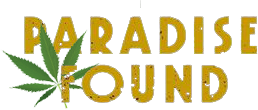A new study based on data collected by law enforcement agencies suggests the availability of illicit psilocybin mushrooms in the U.S. has risen significantly compared to prior years. This uptick in psilocybin seizures suggests that the mushrooms are now easier to find on the street.
Researchers at New York University (NYU) uncovered a rapidly growing trend suggesting more Americans have access to psilocybin mushrooms, as the list of potential medical benefits grows. Published online in the journal Drug and Alcohol Dependence, the study analyzed 4,526 psilocybin seizure reports from 2017 to 2022, and categorized the annual number of confiscations and weight of seized shrooms per state. The study shows that law enforcement seizures of psilocybin mushrooms in the U.S. skyrocketed from 402 seizures in 2017 to 1,396 in 2022. The total weight of psilocybin mushrooms seized also increased by 2,749%, from 226 kilograms (498 pounds) in 2017 to 844 kilograms (1,860 pounds) in 2022.
Drug seizures by law enforcement are also what the U.S. Drug Enforcement Administration uses to determine drug availability. The researchers noted that this data does not paint a clear picture of the exact amount of psilocybin in America, given all of the people who elude the police or go undetected.
Confiscations of psilocybin are up in nearly every region of the country that was analyzed. Researchers found “significant increases” of psilocybin seizures in all four regions—the Northeast, West, South, and Midwest regions of the U.S., and shrooms are particularly growing in popularity on the West Coast.
“We found that the number of shroom seizures and the total weight of shrooms seized annually increased through 2022, and the greatest weight of shrooms seized was in the West,” Joseph J. Palamar told High Times in an email.
Palamar, a co-author of the study, is an associate professor at the Department of Population Health at NYU’s Langone Health in Manhattan. He explained that law enforcement data helps to explain how prevalent psilocybin is, but does not show the entire picture. It was impossible for the researchers, for instance, to determine if the shrooms were wet or dry, as police typically don’t make the distinction.
“We don’t treat drug seizures as an indicator of use but rather more of an indicator of availability,” Palamar said. “This might seem a bit counterintuitive at first because seizures literally remove drugs from the market, but we believe seizures only represent a small sample of drugs available. We believe the increase in shroom seizures indicates an increase in availability. Seizures are far from being a perfect indicator of availability but it’s still an important focus.”
Self-reported data on psychedelic use is very limited, but earlier research indicates that psilocybin is the most consumed plant-based psychedelic in the U.S. (This of course excludes cannabis, which some consider to be a mild psychedelic.)
The prevalence of psilocybin use probably comes in waves, he said, with waves taking place in the 1960s and so on. This time around, psilocybin research is focusing on its potential medical benefits more than its harms, representing a sea change in the way psychedelic mushrooms are perceived.
Starting with Denver, Colorado in 2019, numerous cities and the District of Columbia decriminalized psilocybin. At the state level, Oregon voters decriminalized psilocybin in 2020, followed by the entire state of Colorado two years later.
Ketamine is another psychedelic that has recently risen in popularity in therapeutic settings, Palomar said. While it was restricted to Schedule III in 1999, a nasal spray was approved by the FDA in 2019, and now clinics in many states provide it.
“All drug trends seem to come in waves, and it’s unknown whether this recent increase is being driven by positive media coverage of psilocybin research, but I strongly believe it’s a factor,” he said. “I anticipate a similar situation with respect to ketamine.”
“Recent increases in use of hallucinogens, more broadly, may be associated with increased coverage of their perceived therapeutic benefits, based on a recent increase in clinical trials testing psilocybin, specifically, in treating psychiatric conditions,” researchers wrote. “Major trials suggest psilocybin’s efficacy in treating conditions such as major depressive disorder in particular, but also in treating conditions such as anxiety, posttraumatic stress disorder, and substance use disorder.”
The researchers in this study said that recreational users frequently take too much, causing dysphoria. Generally speaking, 3.5 grams of psilocybin is considered a large dose, and 5 or more grams is considered a heroic dose. Powerful, profound, and confusing effects can arise even when people consume even just a few grams. However researchers like Matthew W. Johnson, a professor of Psychedelics and Consciousness Research at Johns Hopkins, suggested that heroic doses are needed for certain conditions.
This article was originally published in the May 2024 issue of High Times Magazine.
The post Psilocybin Surge first appeared on High Times.
